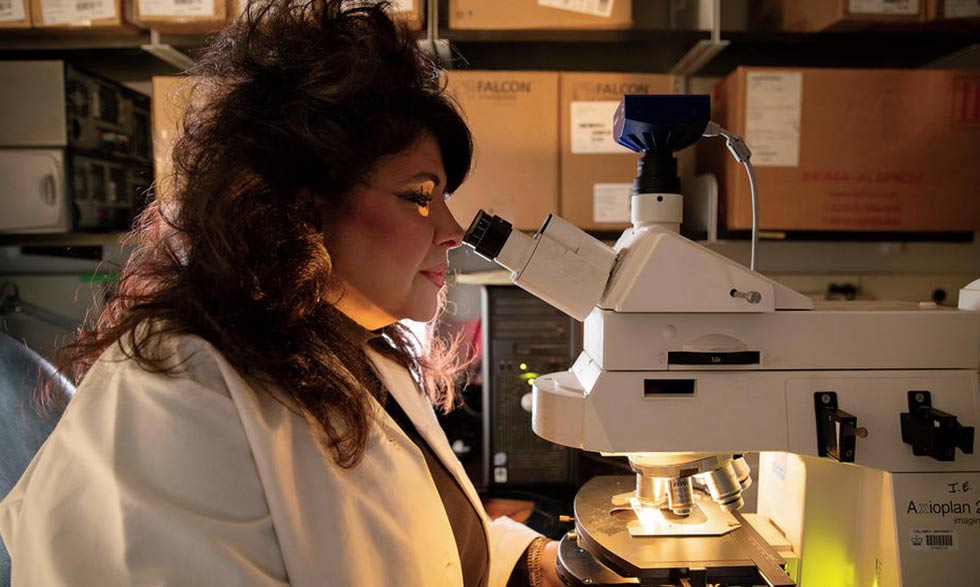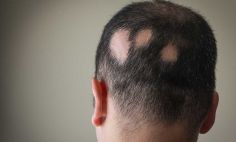Angela Christiano, Ph.D., is not a typical researcher. Dr. Christiano studies a hair loss disease called alopecia areata. She also has it.
Alopecia areata makes people lose their hair, usually in small patches. While it is not painful, the condition can cause serious confidence and self-image issues.
Dr. Christiano’s story
Dr. Christiano was already doing research in dermatology, which focuses on skin, hair, and nails, when her hairdresser noticed bald patches on her head.
Dr. Christiano suspected alopecia areata and confirmed it with a fellow doctor.
After her diagnosis in 1995, Dr. Christiano wanted to learn as much as she could about the condition and other types of hair loss.
She found there wasn’t much research out there.
"I thought, 'maybe this is fate directing me to a topic,'" Dr. Christiano says.
Dr. Christiano has been researching alopecia areata for 20 years at Columbia University. Her work, which is funded by NIH, has led to major breakthroughs over the last 10 years.
Genetic research
Dr. Christiano focuses on how people inherit alopecia areata. People are more likely to get alopecia areata if a close family member has it.
To better understand this, the National Institute of Arthritis and Musculoskeletal and Skin Diseases funded a registry for people with the condition to learn about their medical history, symptoms, and experiences. Dr. Christiano’s group was one of five research sites that contributed to the registry.
People filled out questionnaires and gave blood samples.
"That registry provided the samples that allowed us to study alopecia areata genetics," Dr. Christiano says.
Improving understanding
Researchers used to think alopecia areata was closely related to skin autoimmune diseases, since hair is part of our skin.
But through her team’s research, Dr. Christiano learned that alopecia areata is more similar to other types of autoimmune diseases like thyroid diseases, celiac disease, rheumatoid arthritis, and type 1 diabetes.
This breakthrough has helped researchers understand the disease and get closer to a treatment. Up until now, there hasn’t been a specifically approved treatment for alopecia areata.
Treatment breakthroughs
Dr. Christiano and her team of researchers found a connection between alopecia areata and a group of molecules called Janus Kinases, or JAKs.
Using drugs that inhibit these molecules, her team is helping people with the disease regrow hair. But not all people.
"Most patients are responding to the JAK inhibitors, but there are still some who are not," Dr. Christiano says. "We’ve got more work to do to find out the rest of the story."
Environmental factors
In addition to genetics, researchers want to understand how environmental factors can impact alopecia.
For example, is it possible too much stress or a poor diet can make hair loss worse?
"One of the last frontiers for alopecia is identifying the environmental triggers," Dr. Christiano explains.
A bright future
Dr. Christiano is hopeful for a future where patients—including herself—have better treatment options.
"With the support of NIH, this research and the development of new treatments can help change the lives of those people with alopecia areata,” Dr. Christiano says.“When people grow their hair back, it changes their lives."






